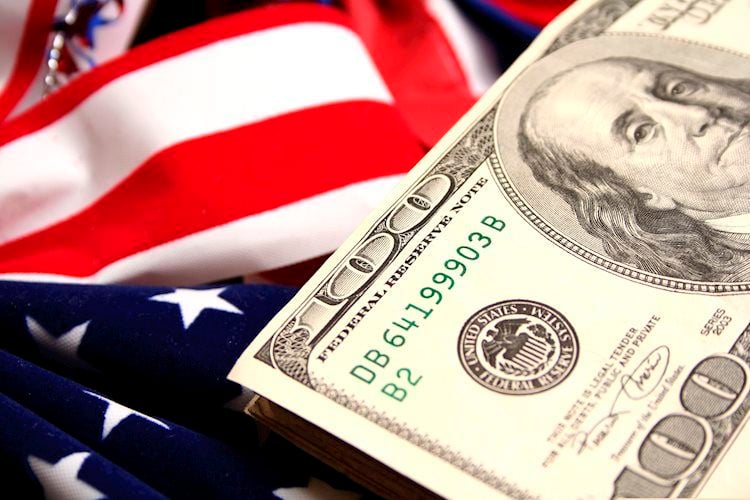- The DXY index trades with mild losses at 105.80, closing a 0.80% weekly gain.
- Fed hawks revived USD strength during the week.
- UoM consumer sentiment data come in lower than expected.
- The focus shifts to next week’s inflation figure from the US from October.
The US Dollar (USD) showed minimal movement on Friday. The DXY index, which measures the value of the US Dollar versus a basket of global currencies, stood with slight losses at 105.80 as bulls seem to be taking a hiatus. The Greenback strengthened after Federal Reserve (Fed) hawks hinted that there may be further tightening, which revived the US Treasury, allowing the Dollar to gain interest.
Despite the United States’ labor market showing signs of cooling down last week, several officials, including Chair Powell, seemed unsatisfied with the progress made on inflation. They spoke with cautious tones, welcoming the recent data but leaving the door open for further tightening in case it is needed. The focus seems to have turned to next week’s October inflation figures from the US.
Daily Digest Market Movers: US Dollar flattens, consolidating weekly gains
- The US Dollar Index is mildly neutral at 105.80 after rising in three out of the last four sessions.
- The University of Michigan revealed that the Michigan Consumer Sentiment index from November came in lower than expected at 60.4 vs the consensus of 63.7, declining from its previous reading of 63.8.
- Markets await next week’s Consumer Price Index (CPI) figures from October from the US.
- The Initial Jobless Claims from the week ending November 3 came in at 217,000, lower than the expected 218,000 and fell in relation to its last reading of 220,000.
- After sharply declining last week, US Treasury yields recovered throughout the week. The 2-year Treasury yield rose back to 5%, while the longer-term 5 and 10-year rates increased to 4.59% and 4.60%, which seems to be limiting downside for the USD.
- Investors continue to be on the sidelines, awaiting high-tier reports to continue placing their bets on the next Fed decision.
- According to the CME FedWatch Tool, the odds of a 25-basis-point hike in December are extremely low, below 10%.
Technical Analysis: US Dollar Index approaches 20-day SMA, bulls must step in
Analysing the daily chart, a neutral outlook is evident for the DXY Index. What gives the outlook neutrality is the index staying below the 20-day Simple Moving Average (SMA) but above the 100 and 200-day SMAs. Bulls are striving to regain the short-term 20-day SMA. As long as the bears hold the index below this level, the DXY will be prone to further downside.
In the meantime, the Relative Strength Index (RSI) turned flat over its midpoint, while the Moving Average Convergence (MACD) displays flat red bars suggesting that the bears momentum has flattened contributing to the neutral outlook.
Support levels: 105.80, 105.50,105.30.
Resistance levels: 106.00, 106.10 (20-day SMA), 106.30.
Fed FAQs
Monetary policy in the US is shaped by the Federal Reserve (Fed). The Fed has two mandates: to achieve price stability and foster full employment. Its primary tool to achieve these goals is by adjusting interest rates.
When prices are rising too quickly and inflation is above the Fed’s 2% target, it raises interest rates, increasing borrowing costs throughout the economy. This results in a stronger US Dollar (USD) as it makes the US a more attractive place for international investors to park their money.
When inflation falls below 2% or the Unemployment Rate is too high, the Fed may lower interest rates to encourage borrowing, which weighs on the Greenback.
The Federal Reserve (Fed) holds eight policy meetings a year, where the Federal Open Market Committee (FOMC) assesses economic conditions and makes monetary policy decisions.
The FOMC is attended by twelve Fed officials – the seven members of the Board of Governors, the president of the Federal Reserve Bank of New York, and four of the remaining eleven regional Reserve Bank presidents, who serve one-year terms on a rotating basis.
In extreme situations, the Federal Reserve may resort to a policy named Quantitative Easing (QE). QE is the process by which the Fed substantially increases the flow of credit in a stuck financial system.
It is a non-standard policy measure used during crises or when inflation is extremely low. It was the Fed’s weapon of choice during the Great Financial Crisis in 2008. It involves the Fed printing more Dollars and using them to buy high grade bonds from financial institutions. QE usually weakens the US Dollar.
Quantitative tightening (QT) is the reverse process of QE, whereby the Federal Reserve stops buying bonds from financial institutions and does not reinvest the principal from the bonds it holds maturing, to purchase new bonds. It is usually positive for the value of the US Dollar.
